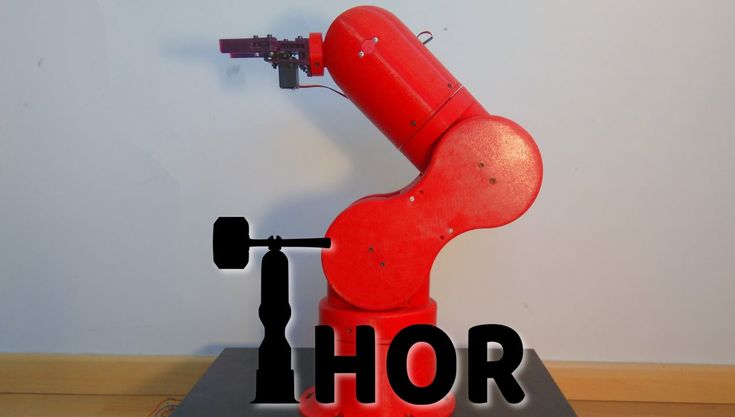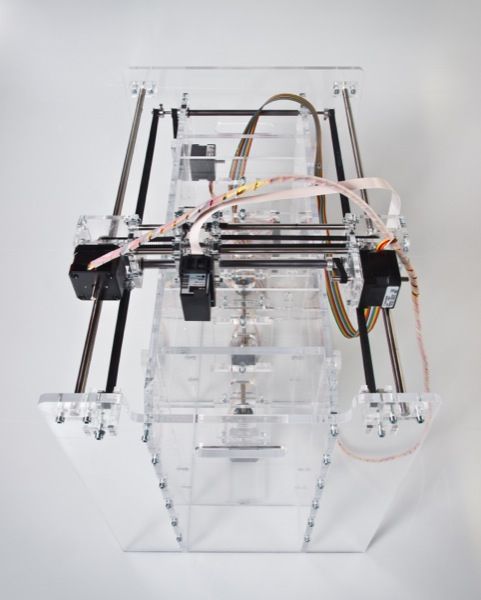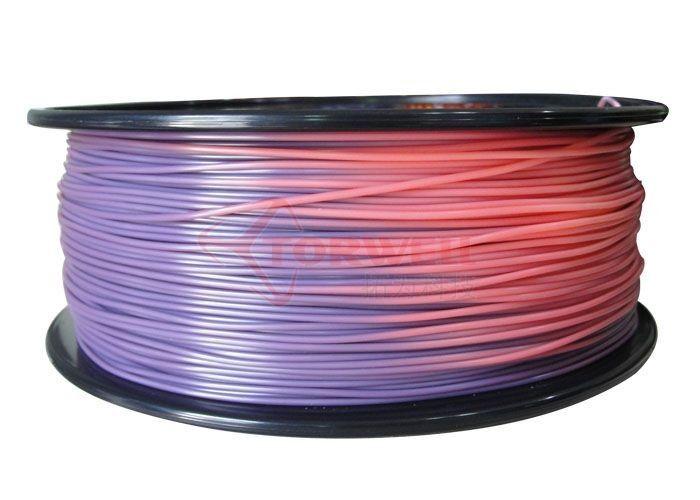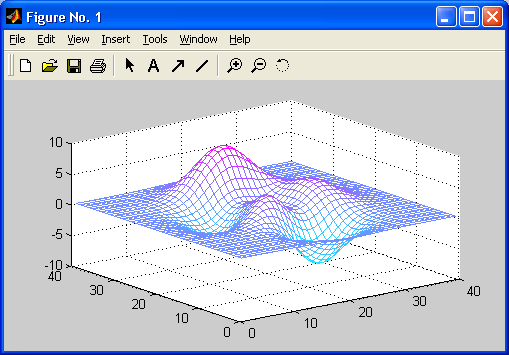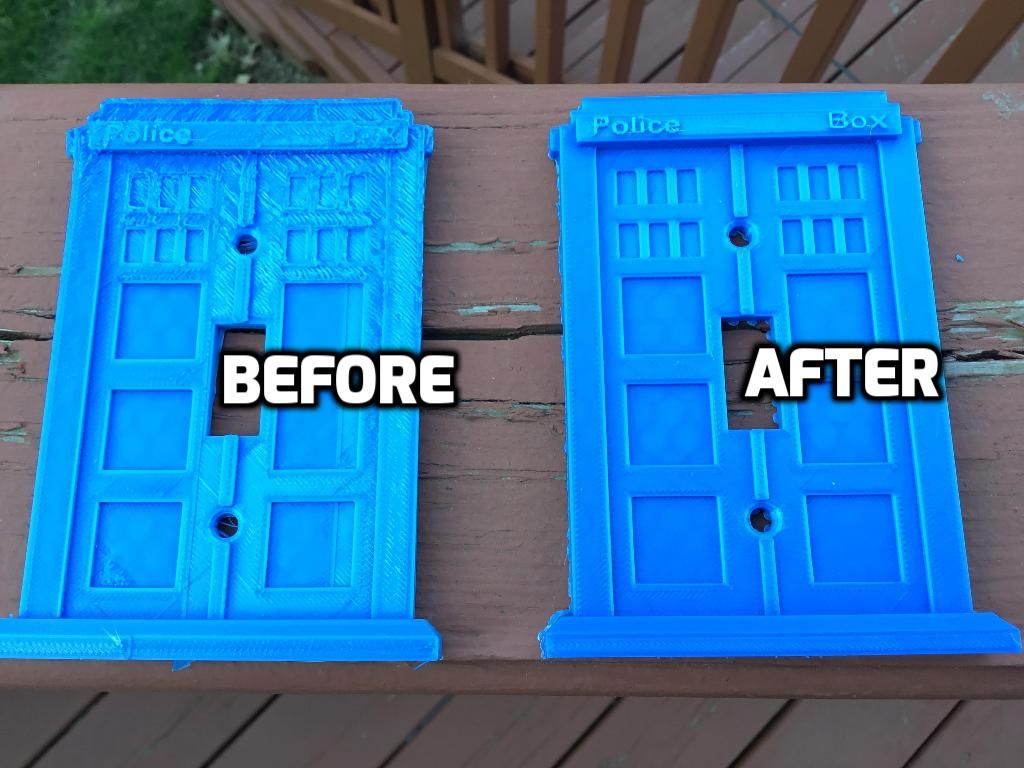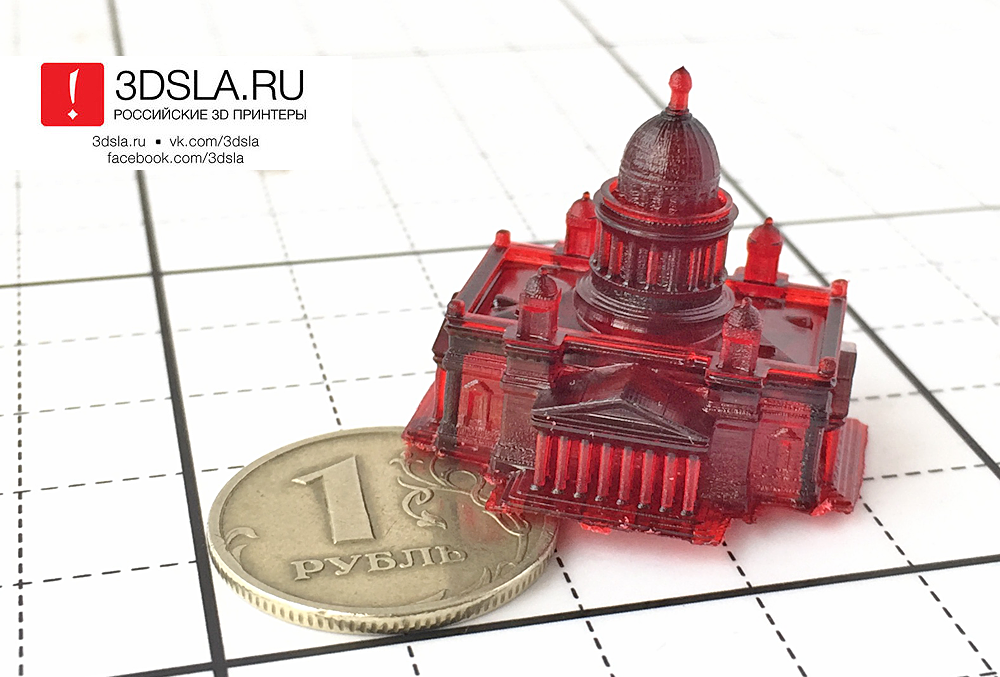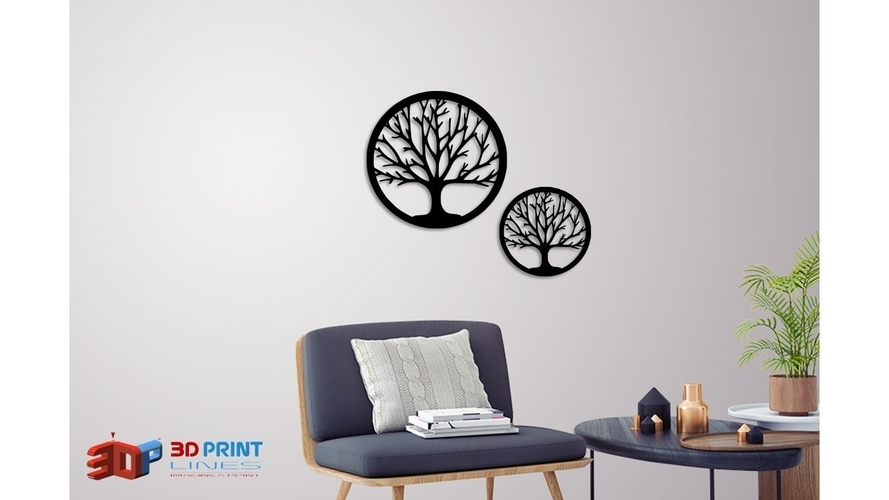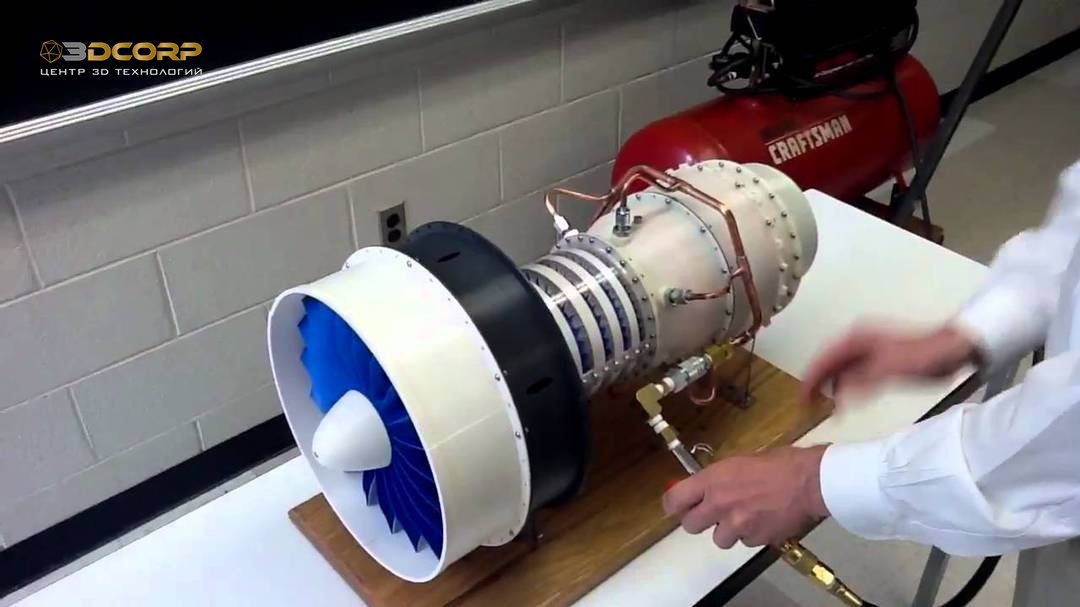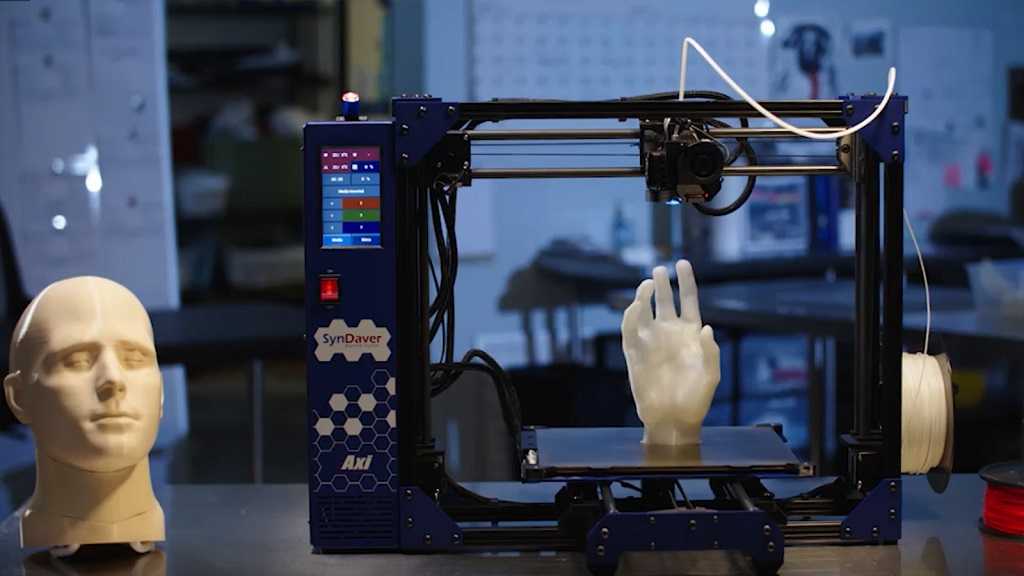3D printing controller
Buy a controller board for your 3D printer in the USA | 3D printing experts
About 3D printer controller boards
A controller board or a motherboard is the heart of a machine. This special unit manages and links the machine’s components to one another. The motherboard oversees the processes, ensuring that your 3D printer or laser engraver is operating to its full capacity. Check that the motherboard is compatible with your 3D printer or CNC machine as some items are manufactured for certain brands. Easily find a high-quality motherboard for your machine in our collection.
Select a controller board for your 3D printer
So, how do you go about selecting a controller board?
Choosing a mainboard depends on the kind of device you are working with and also what the tasks that you intend on having the device perform. The most important feature to consider is the firmware that supports the mainboard. There are many different types available like Marlin, MK4duo, and RepRapFirmware. Do take into account that certain mainboards will come with the manufacturer’s firmware installed, for example, Creality and Klipper.
Another consideration is the amount of axis that you would like to be supported by the mainboard and the number of extruders you will be able to hook up to your 3D printer. The speed of the main processor is also determined by your choice. The higher the MHz the faster your machine can run. Furthermore, ensure that the peripherals you would like to incorporate into your machine are supported by the controller board. This concerns the fan outputs, external stepper drivers, thermistors, thermocouples, SD cards, and LCD/touch screens. It can also be that you want to set up another circuit for the heated bed, allowing you to provide more power to your machine. Decide which voltage is required to run your machine as higher voltages will give more power for the heaters and stepper motors. The most commonly supported voltages are 12-24V. The expandability of the motherboard will also be different.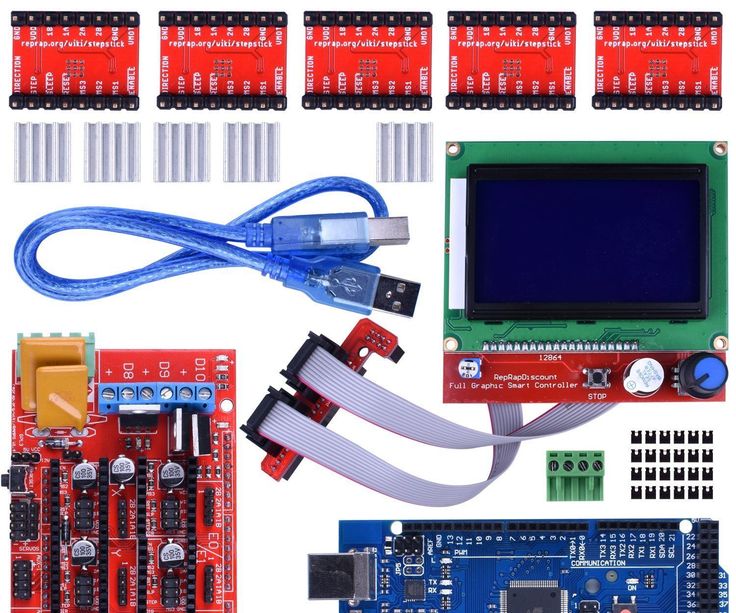 Some will accept certain add-ons, like Duet 3D known for electronic devices with various innovative expandability options.
Some will accept certain add-ons, like Duet 3D known for electronic devices with various innovative expandability options.
3D printer motherboard firmware
Firmware is an essential part of the motherboard and acts as the connection between all components. A firmware will function based on the scripts and programs designed by developers. This can vary depending on a device and its intended function. Without firmware, devices would not know what to do and in fact, would not function at all. Firmware can be found in all devices like TVs, washing machines, and security cameras. Firmware processes the inputs and controls the outputs in 3D printers and CNC machines. An example of an input is the file provided by the slicer software with G-code instructions which is then executed by the firmware.
Updating a 3D printer’s firmware
Updating firmware is possible however there are many factors to take into consideration. Compatibility is very important since not all motherboards support the same types of firmware.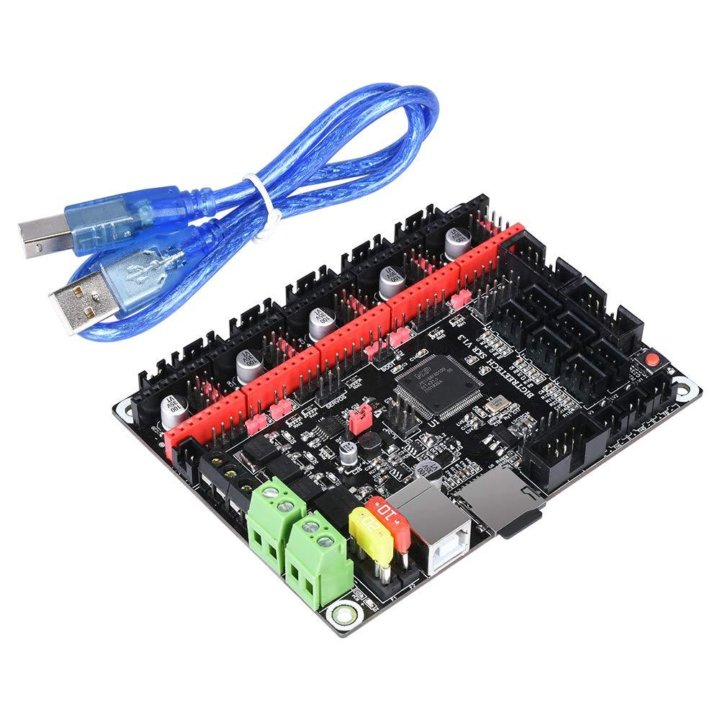 There are many reasons to update your firmware, however, it is advised to do this if really required. For example, if you need to fix some bugs and your machine keeps crashing. If you feel like you are missing out on the necessary features that your project or activity requires, this is also a good reason to look into updating your firmware. In case you would like to fully replace your motherboard, it is very possible that you will also have to change the firmware as well, especially if the previous firmware does not match.
There are many reasons to update your firmware, however, it is advised to do this if really required. For example, if you need to fix some bugs and your machine keeps crashing. If you feel like you are missing out on the necessary features that your project or activity requires, this is also a good reason to look into updating your firmware. In case you would like to fully replace your motherboard, it is very possible that you will also have to change the firmware as well, especially if the previous firmware does not match.
Do you have questions about controller boards? Please let us know through our customer service team, we are happy to help!
Frequently asked questions
How can I upgrade the firmware of my 3D printer?
Connect your 3D printer to your computer with a USB cable or download the compatible firmware onto your USB and plug it into your 3D printer. Always check the manual as this can depend on the 3D printer. There is a series of firmware to select from like Marlin, MK4duo, or RepRapFirmware. Make sure that your firmware is compatible with your 3D printer’s mainboard.
Make sure that your firmware is compatible with your 3D printer’s mainboard.
What is the best 3D printer controller board?
The best controller board for your 3D printer depends on the kind of machine and the firmware that is supported. Decide what kind of peripherals will make your machine complete and determine the features and operations you need to perform, this will majorly outline which mainboard to select. Find your 3D printer and see the available upgrades for your machine on the product pages.
What is a 3D printer controller board?
A 3D printer’s controller board or motherboard is often referred to as the heart of the machine. It is a special unit that oversees and manages all operations of a 3D printer or CNC machine. The firmware is located in a mainboard that connects all components to the same place for inputs and output commands.
What controllers do 3D printers use?
A 3D printer is controlled by the firmware.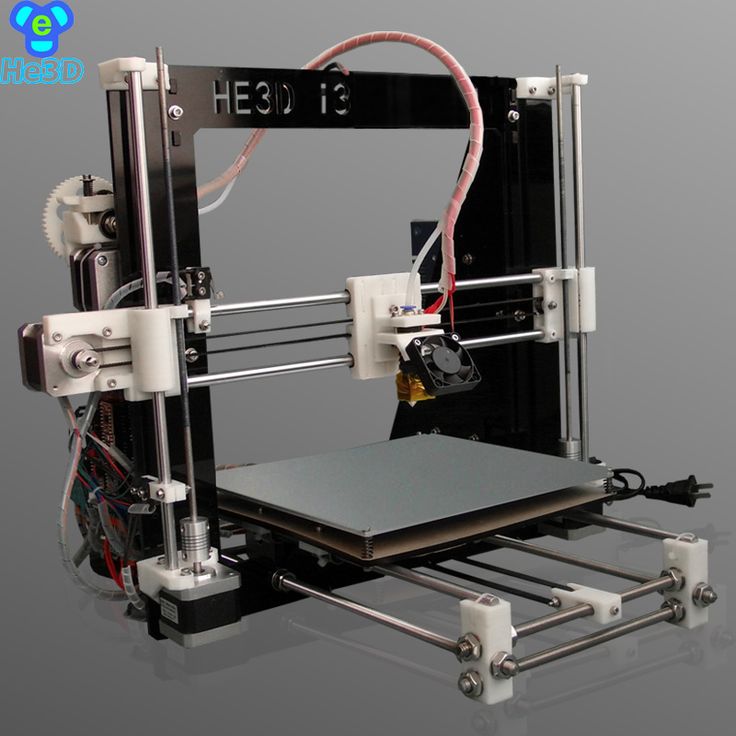 The firmware receives input from the slicer software with G-code commands for the 3D printer. The 3D printer is then instructed on where to place the extruder and when, or how much filament to extrude at a certain temperature appropriate for the material or model being printed.
The firmware receives input from the slicer software with G-code commands for the 3D printer. The 3D printer is then instructed on where to place the extruder and when, or how much filament to extrude at a certain temperature appropriate for the material or model being printed.
How do I choose a 3D printer mainboard?
A controller board should be selected based on the intended functions for your 3D printer. Choose a 3D printer mainboard that supports the peripherals best for optimal operation. There are many aspects to take into account like the overall setup, voltages, and expandability options. We list upgrades for specific 3D printers on the details page in our 3D printer section.
The 6 Best 3D Printer Controller Boards in 2022 – Clever Creations
Our site is reader-supported. When you buy via the affiliate links on this site, we will receive a commission at no cost to you. All opinions remain our own. Learn more
From using Arduinos with CNC shields to now having a full-fledged WiFi-equipped circuit, 3D printer controller boards have come a long way. They’re the brains of any 3D printing setup and are responsible for controlling, coordinating, and executing all of a printer’s functions.
They’re the brains of any 3D printing setup and are responsible for controlling, coordinating, and executing all of a printer’s functions.
If you’ve bought a fully assembled 3D printer that you are happy with, it’s doubtful that you ever had to think about the controller board. But if you’re someone who wants to upgrade his 3D printer or build a DIY printer from scratch, you probably understand how important it is to select the best 3D printer controller board for your needs.
To help you with getting the best control board for your 3D printer, we’ve compiled a list of the six best motherboard options that you can buy right now.
| 3D Printer Controller | Summary | Input | Processor | Price | Best Offer |
|---|---|---|---|---|---|
| Duet 2 WiFi | Best overall | 11-25V | 32-bit | $170 | MatterHackers |
| Duet 3 6HC | Best high-end | 11-32V | 32-bit | $255 | MatterHackers |
BTT SKR Mini E3 V2.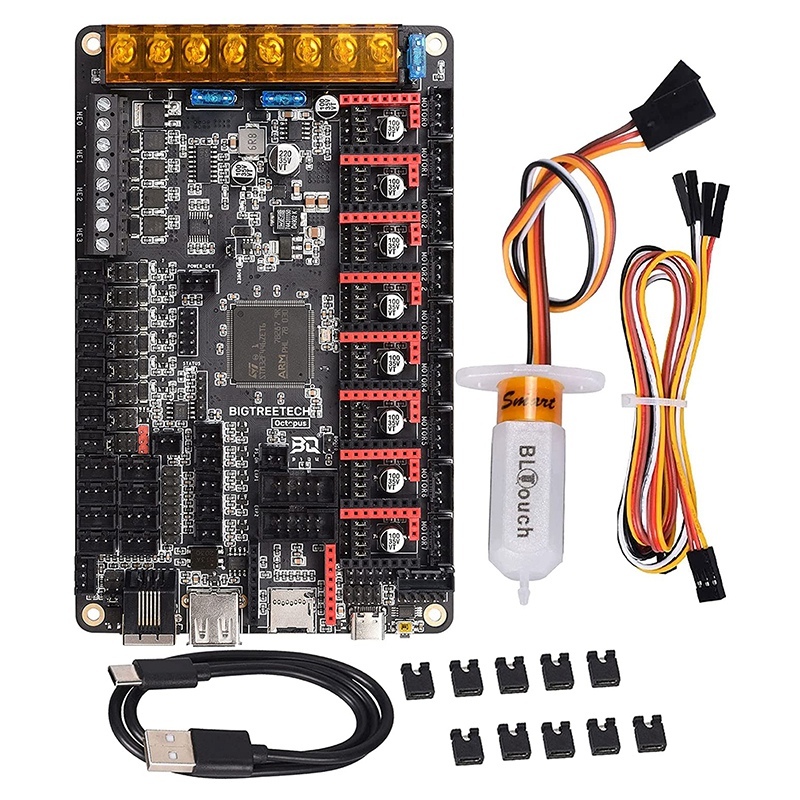 0 0 | Best on a budget | 12/24V | 32-bit | $65 | Amazon |
| Creality 3D 4.2.7 | Best for Ender 3 | 24V | 32-bit | $50 | Creality3D |
| BIGTREETECH Octopus | Most stepper drivers | 4.75-36V | 32-bit | $52 | Amazon |
| BIGTREETECH TFT35 V3.0 | Best LCD add-on | 5V | 32-bit | $45 | Amazon |
Best 3D Printer Motherboards in 2022
Duet 2 WiFi
Best overall
Check Price
AmazonMatterHackersE3D
The Duet 2 Wi-Fi features a 32-bit ARM-based processor specifically designed for industrial automation projects. As-is, the Duet 2 Wi-Fi can support up to five unique stepper motors. This, however, can be extended to support up to five extra stepper motors and extruders with the Duex 5 expansion board.
All stepper drivers used on the Duet 2 Wi-Fi are TMC2660s, which have a high current rating of 2.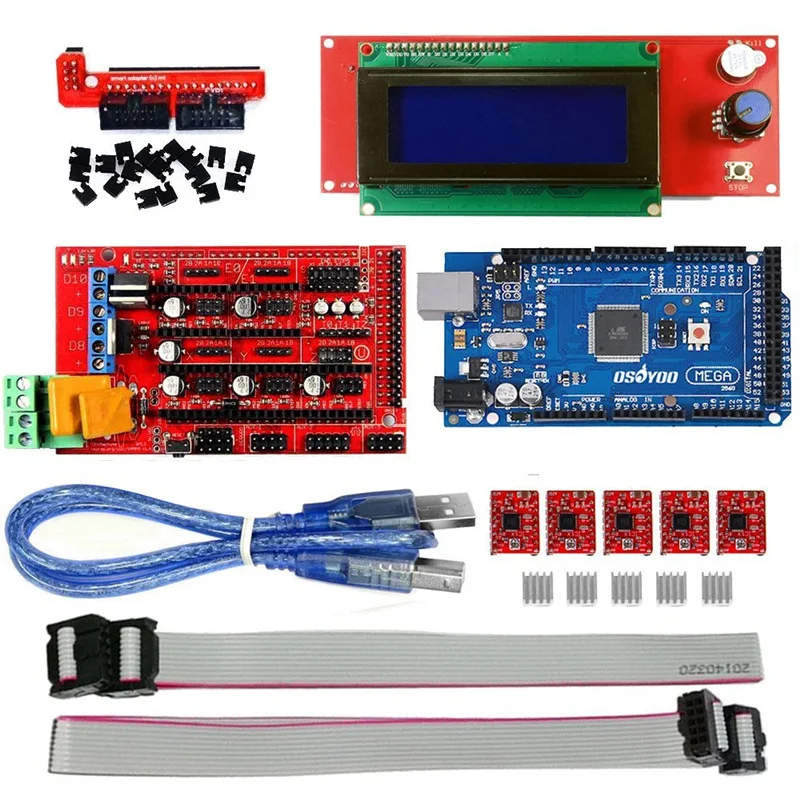 4A and are able to run the stepper motors quietly in up to 1/256 micro-stepping. The board runs on the well-documented and feature-rich RepRap firmware.
4A and are able to run the stepper motors quietly in up to 1/256 micro-stepping. The board runs on the well-documented and feature-rich RepRap firmware.
The great thing about the Duet 2 Wi-Fi is its compatibility with different Duet expansion boards and accessories. You can connect a PanelDue board to get a full-color graphic touch screen, temperature sensing daughterboards, the Duex 5 for additional steppers, servos, fans, and heaters. It even has the option to use a smart effector for delta 3D printers for bed leveling.
The many features and ability to use it with practically any 3D printer make the Duet 2 Wifi the overall best 3D printer controller board that you can get right now. It definitely costs more than your typical board, but you get what you pay for.
Standout Features
- Wi-Fi connectivity
- External stepper driver support
- Quiet 1/256 microstepping
Technical Details | |
|---|---|
| Input voltage | 11V - 25V |
| Stepper drivers | 5x TMC 2660 |
| Microstepping | Up to 256 |
| Microprocessor | ARM Cortex M4F, 32-bit |
| Connections | 2.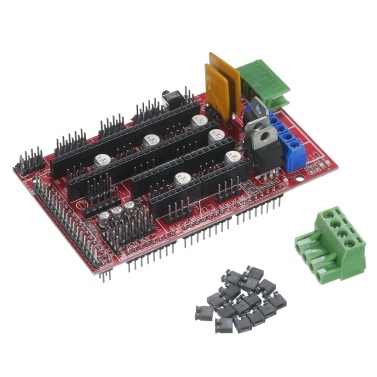 4GHz WiFi, USB serial port 4GHz WiFi, USB serial port |
| SD card slot | Yes |
What We Like
- Powerful
- Many I/O ports
- Built-in Wi-Fi
Could Be Better
- High price
Find Duet 2 WiFi at
AmazonMatterHackersE3D
Duet 3 6HC
Best high-end
Check Price
AmazonMatterHackersE3D
The Duet 3 6HC is the latest release from Duet 3D. The 6HC in the name stands for 6 High Current stepper motors. The board uses a faster 300 MHz 32-bit ARM processor, allowing for high-speed calculations. The Duet 3 features six Trinamic 5160 stepper motor drivers rated at a 6.3 A peak current.
Other than this, you get 10 PWM outputs for the heated beds, extruders, and fans. It has 9 I/O ports for end-stops, Z probes, filament sensors, and other peripherals. These allow you to decorate your 3D printer with many sensors, fans, and accessories and still have room left for more.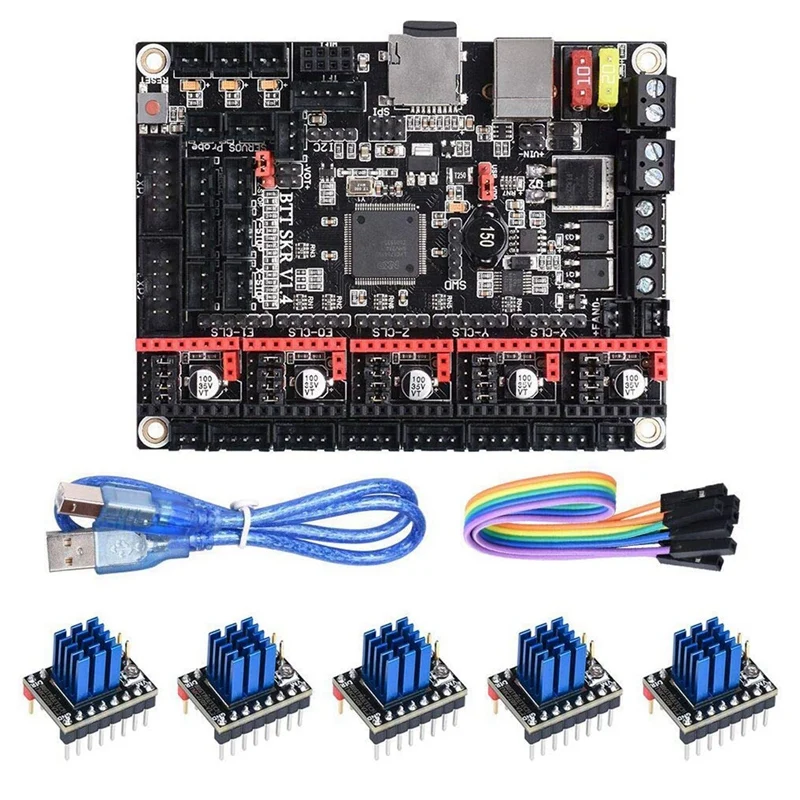
The CAN-FD buses will let you connect other Duet boards, smart tools, and custom add-ons, thus ensuring upgradability. There’s a dedicated high-speed SPI bus to a single board computer (SBC) to let you connect SBCs like Raspberry Pi’s.
The Duet 3 6HC is expensive and aimed at professionals that require a versatile high-end 3D printer controller. However, the RepRap community’s ample amount of documentation and support means that if you want one, you can easily configure it to work with any off-the-shelf 3D printer as well.
Aside from being more than powerful enough to drive nearly any 3D printer, the Duet 3 is an equally attractive option for a home CNC machine or laser engraver.
Standout Features
- High-speed ARM processor
- High current stepper drivers
- Numerous i/o options
Technical Details | |
|---|---|
| Input voltage | 11V to 32V |
| Stepper drivers | 6x TMC2160 or TMC5160 |
| Microstepping | Up to 256 |
| Microprocessor | ARM Cortex M7, 32-bit |
| Connections | Ethernet and USB Serial port |
| SD card slot | Yes |
What We Like
- Wide stepper motor compatibility
- Suitable for high-end 3D printers
- Lots of expansion options
Could Be Better
- High price
- Requires technical expertise
Find Duet 3 6HC at
AmazonMatterHackersE3D
BIGTREETECH SKR Mini E3 V2.
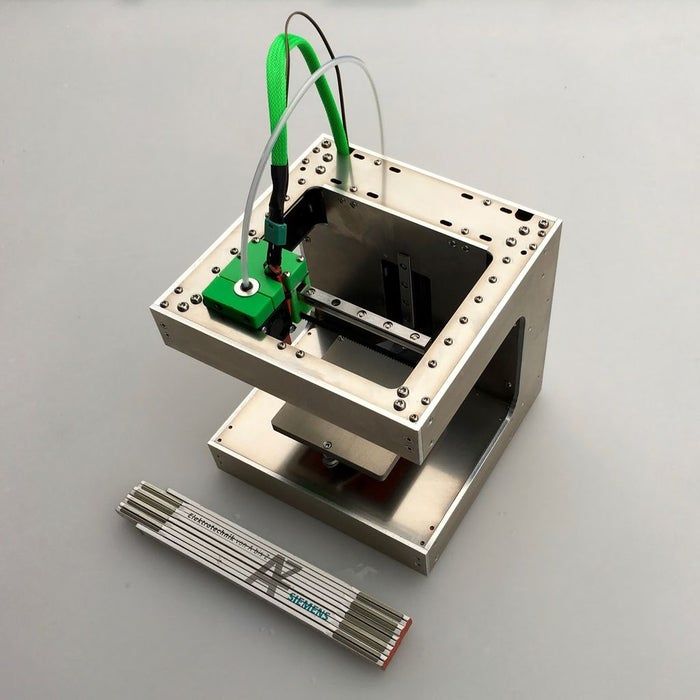 0
0 Best on a budget
Check Price
AmazonBigtreetechGeekbuying
The SKR Mini E3 V2.0 is the successor to the original E3, designed explicitly for the Ender 3 3D printers. With the SKR Mini E3 V2.0, Bigtreetech offers support for more Creality machines like the CR-10, CR-10S5, and Ender 3 3D printers.
The V2.0 is a 32-bit 3D printer controller board that features ultra-silent, TMC 2209 stepper motor drivers and can handle 2A RMS current. It also comes with two Z-axis ports, so that you can drive dual Z-axis stepper motors.
Aside from the excellent stepper drivers, the SKR Mini E3 V2.0 also comes with support for BLTouch and filament detection sensors. This gives you the option to install additional Ender 3 upgrades and Ender 5 upgrades that reduce the chance of failed 3D prints.
The Mini E3 V2.0 supports the open-source Marlin firmware. It offers a variety of additional features like the power resume function, automatic shutdown, and onboard sensorless homing functions.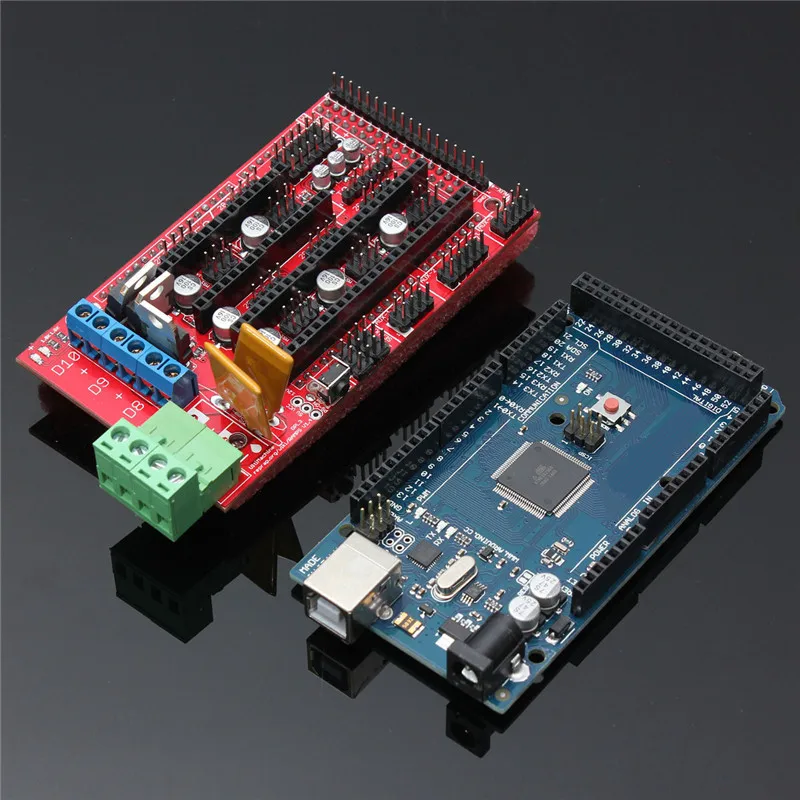
If you’re on a budget and want to upgrade your Creality 3D printer, the SKR Mini E3 V2.0 is likely the best 3D printer controller for you.
Standout Features
- Parallel Z-axis interface
- BLTouch and filament detection ports
- Improved thermal performance
Technical Details | |
|---|---|
| Input voltage | 12/24V |
| Stepper drivers | 4x TMC2209 |
| Microstepping | 256 |
| Microprocessor | ARM Cortex-M3, 32-bit |
| Connections | Mini-USB-B type |
| SD card slot | Yes |
What We Like
- Low price
- Easy to use
- Silent stepper drivers
Could Be Better
- Limited upgradability
Find BIGTREETECH SKR Mini E3 V2. 0 at
0 at
AmazonBigtreetechGeekbuying
Creality 3D 4.2.7
Best for Ender 3
Check Price
AmazonCreality3D
The Ender 3 is still one of the best budget Creality 3D printers. But it has aged in terms of its features and capabilities. The latest version of the 3D printer controller board from Creality – 4.2.7 aims to bring the Ender 3 to the current 3D printing trends.
The Creality 3D 4.2.7 controller board features a 32-bit ARM processor with increased flash storage that lets you run more firmware features faster, and with this supporting the latest Marlin 2.0 firmware. Creality calls this controller board the “silent mainboard” due to the TMC 2225 stepper motor drivers that keep your 3D printer’s motors silent.
This 4.2.7 now comes with a pre-installed bootloader, which means that you can update the firmware by merely inserting the SD card with the firmware BIN file. It also has ports for the BLTouch auto leveling sensor and filament sensors that remove the need for any previously needed extenders.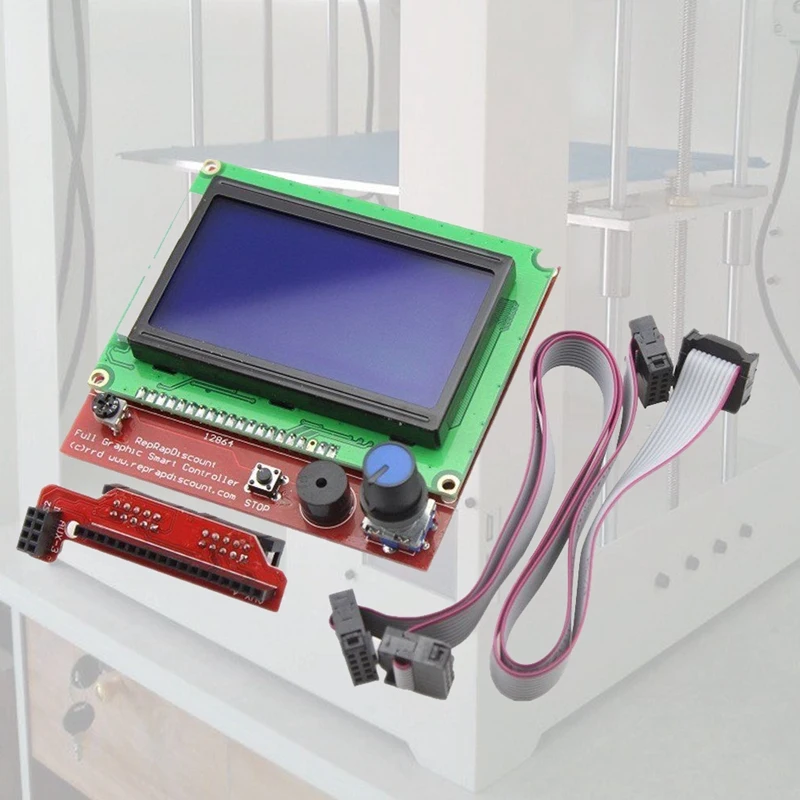
The Marlin 2.0 comes pre-installed with the board, and with a little bit of configuration, you can directly use it with your Ender 3. It is an excellent upgrade for the Ender 3 3D printers, considering that you get an officially supported board with the latest features.
Standout Features
- 32-bit processor
- Pre-installed bootloader
- Silent TMC 2225 stepper drivers
Technical Details | |
|---|---|
| Input voltage | 24V |
| Stepper drivers | 4x TMC2225 |
| Microstepping | Up to 256 |
| Microprocessor | ARM Cortex-M3, 32-Bit |
| Connections | Micro-USB port |
| SD card slot | Yes |
What We Like
- Easy to install and use
- Official company support
- Affordable
Could Be Better
- No UART control
- Poor quality control
Find Creality 3D 4.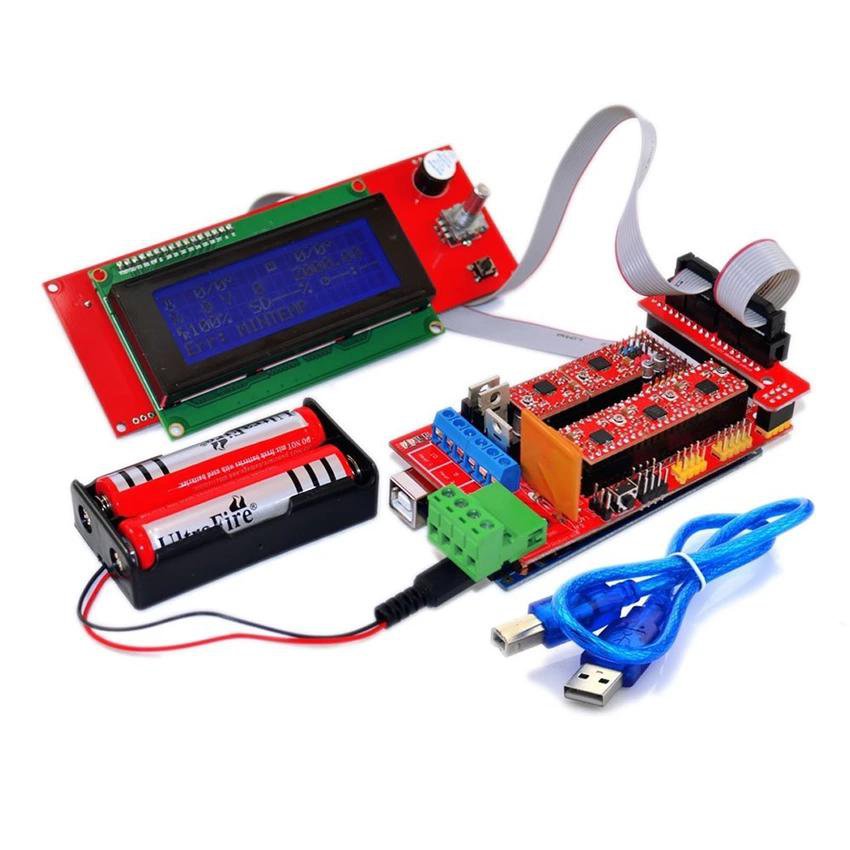 2.7 at
2.7 at
AmazonCreality3D
BIGTREETECH Octopus
Most stepper drivers
Check Price
AmazonBigtreetechGeekbuyingBanggood
The BIGTREETECH Octopus controller board natively supports eight stepper motors. You can choose your stepper motor drivers and the mode in which you want to run them, and this makes the board a beast in terms of sheer stepper motor support.
This 3D printer controller board supports up to four hot-end heaters. Then there are six PWM controllable fan interfaces, six end-stop switches, and two inputs for filament detection sensors. You even get a CAN bus interface if you decide to upgrade further and a USB-A port that can interface with a Raspberry Pi using emulated serial over USB.
Another expansive feature of the Octopus board is the support for a dual Z-axis drive. This can come in handy if you’re building a large cartesian or even a Core XY-type 3D printer. There are many other features too, and the sheer number of connectivity options make it one of the best 3d printer controllers if you’re planning to build something like a Voron 3D printer that needs many stepper motors.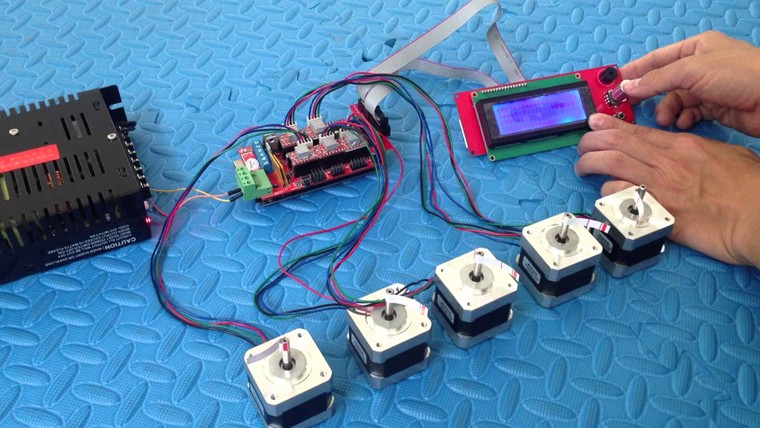
Standout Features
- Supports up to 8 stepper motors
- Interfaces with Raspberry Pi
- Marlin and Klipper firmware support
Technical Details | |
|---|---|
| Input voltage | 4.75V - 36V |
| Stepper drivers | 8 pluggable stepper driver support |
| Microstepping | Up to 256 |
| Microprocessor | ARM Cortex-M4, 32-bit |
| Connections | USB type C port |
| SD card slot | Yes |
What We Like
- Suitable for large 3D printers
- Lots of expansions ports
- USB-C interface for easy compatibility
Could Be Better
- Complex wiring
- Limited community support
Find BIGTREETECH Octopus at
AmazonBigtreetechGeekbuyingBanggood
BIGTREETECH TFT35 V3.
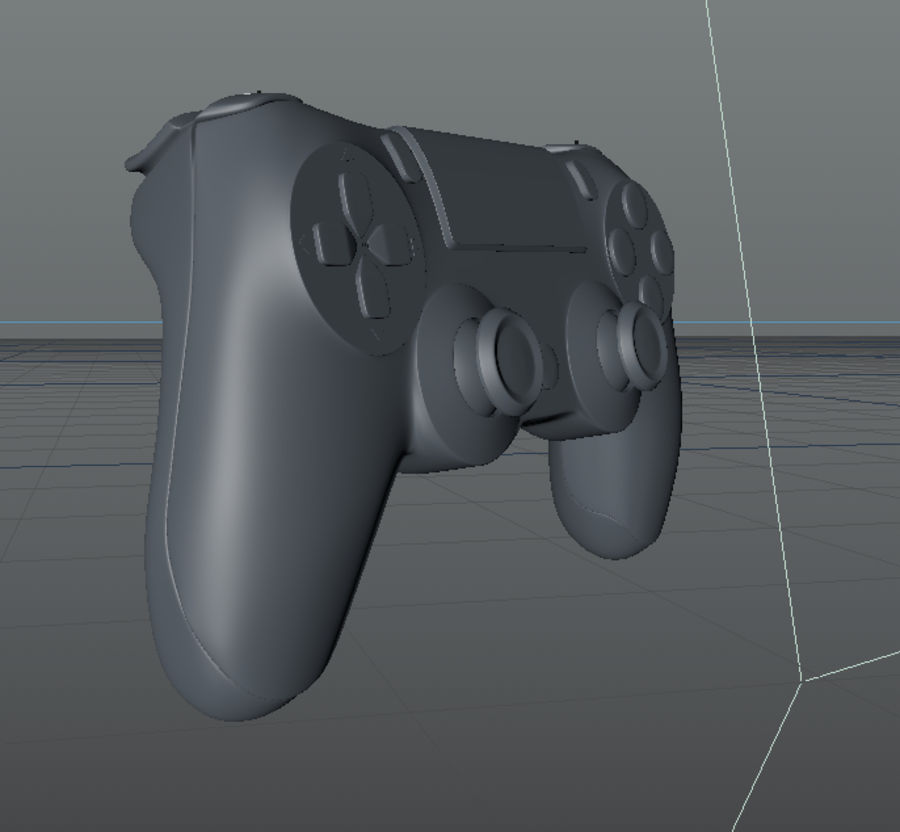 0
0 Best LCD add-on
Check Price
AmazonBigtreetechBanggood
The BIGTREETECH TFT35 V3.0 is an LCD touch screen upgrade designed for the Ender 3 and CR-10 3D printers. The V3.0 stands out because of its dual nature. You can use it as a regular LCD screen with the knob or use the touch screen to navigate the menu quickly.
It gives you the best of both worlds without the hassles of either. Additionally, you get a port for an external Wi-Fi module, a full-sized SD card slot, and a USB 2.0 port, giving you plenty of options in terms of connectivity.
However, the touch screen is not plug-n-play, and you need to tweak some firmware settings to get it working with your 3D printer. Teaching Tech on YouTube has a comprehensive guide covering everything you need to get the TFT35 working.
The BIGTREETECH TFT35 V3.0 is not meant as a completely new overhaul for your 3D printer but rather is aimed to improve the functionality of interfacing with it. The touch screen combined with the knob is suitable for many users.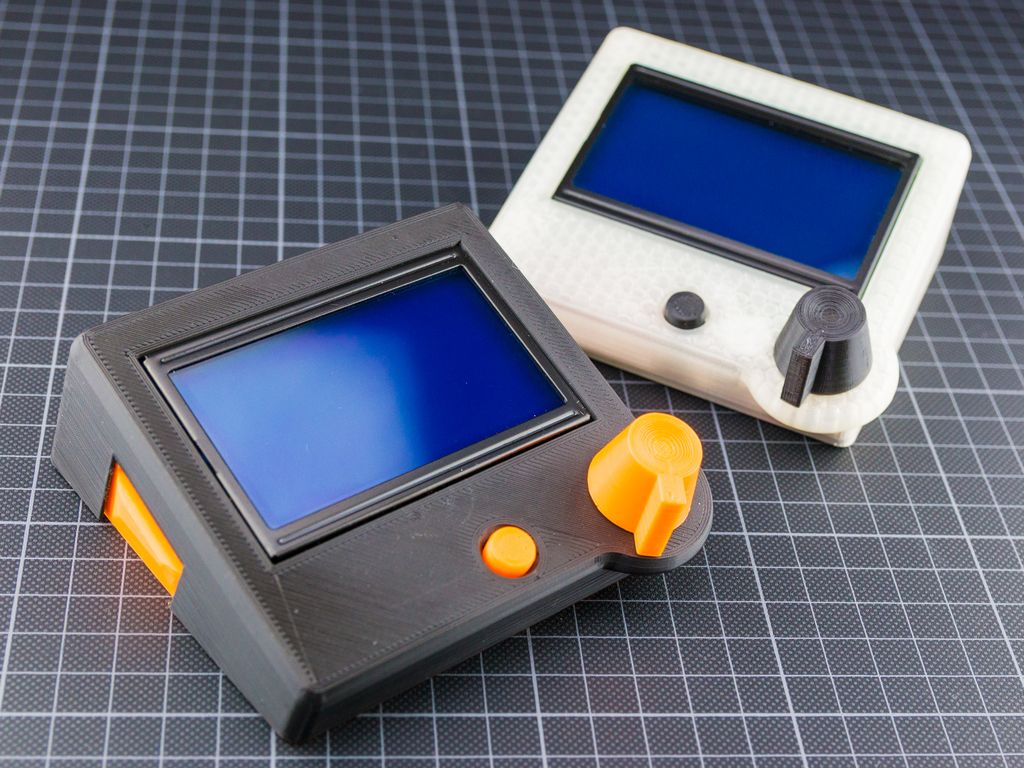 And considering the price, it is a worthwhile upgrade to make.
And considering the price, it is a worthwhile upgrade to make.
Standout Features
- Dual-mode use
- Pre-installed bootloader
- Wi-Fi module and filament detection ports
Technical Details | |
|---|---|
| Input voltage | 5V |
| Microprocessor | ARM Cortex-M3 series 32-bit |
| Connections | USB A port and external Wi-Fi module support |
| SD card slot | Yes |
What We Like
- Easy to use
- Compatible with many 3D printers
- Lots of configuration options
Could Be Better
- Firmware can be buggy
- Technical expertise required
Find BIGTREETECH TFT35 V3.0 at
AmazonBigtreetechBanggood
Buyer’s Guide
Above we have listed some of the best 3D printer controller boards available.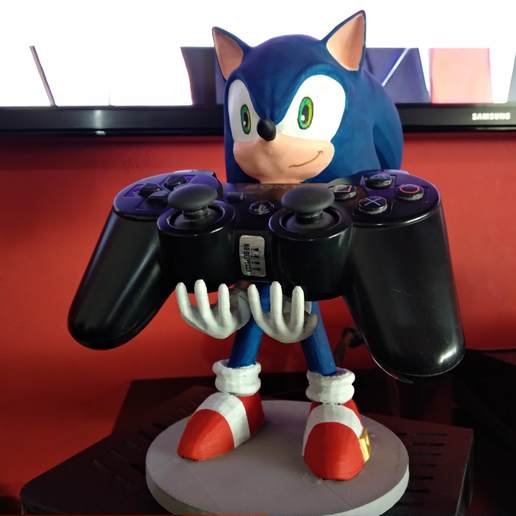 But what if you want to look for more boards? What exactly do you look for in a 3D printer motherboard, and how do you select one for yourself? Here are a few pointers that you need to keep in mind.
But what if you want to look for more boards? What exactly do you look for in a 3D printer motherboard, and how do you select one for yourself? Here are a few pointers that you need to keep in mind.
Firmware Compatibility
Firmware is the software on the 3D printer controller board that is responsible for all calculations and commands to the printer hardware. There are many different types available, for example, Repetier, Prusa, Klipper, and Smoothieware.
Recommended:
Creality Sonic Pad Review: A Klipper Solution in Progress
Each one is designed for a slightly different purpose, and you need to keep in mind your goals with the machine. For example, if you want a high-speed 3D printer, Klipper is the best choice for you. Marlin and RepRap are the go-to options if you want well-documented and widely used firmware.
You need to consider the choice of your firmware beforehand to select the best suitable controller board for yourself. Make sure there’s enough documentation and support available with your combo so that if you run into any issues, you can quickly sort it out.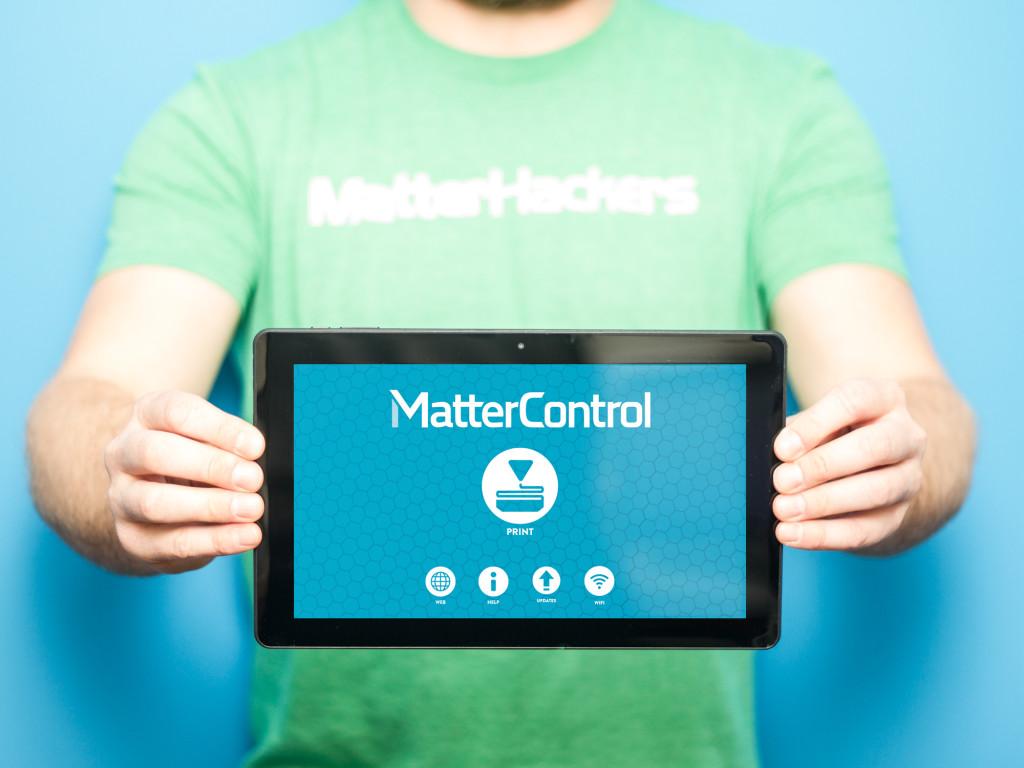
Processor
3D printers either have an 8-bit controller board or a 32-bit board. An 8-bit board is cheap to manufacture and provides all the basic functionalities you would expect from a 3D printer. However, it comes with low onboard memory, and the lower number of bits means that it can process fewer calculations at a time, thus significantly affecting its speed.
32-bit motherboards operate at a higher clock speed, have a slightly greater onboard memory, and execute calculations at a much higher rate. They’re compatible with more I/O ports and communication interfaces, and all of these translate to a more feature-rich 3D printer motherboard.
If you want a basic 3D printer with limited functionalities, 8-bit boards are an option. They’ll save a bit of money, and you won’t have to pay for things you won’t use. However, if you want your 3D printer to be future-proof, have advanced functions, and print faster, a controller board with a 32-bit processor is vastly superior.
In our list with the best 3D printer controller boards above, we have only added 32-bit controllers. We believe that an 8-bit board is not worth buying and a 32-bit board is always the better option.
Communication methods
The most basic method of communication on a 3D printer motherboard is a USB port. A USB serial port allows you to control your 3D printer via a USB connection with a computer.
Wi-Fi and Ethernet ports are other methods of communicating with your 3D printer. An ethernet port would allow you to control your 3D printer over a local wired network.
Wi-Fi connectivity would allow you to control your printer wirelessly. One benefit of Wi-Fi is that you don’t even have to be present in the same room as your 3D printer, and you can control it remotely from anywhere.
Low-end controller boards don’t come with Wi-Fi and Ethernet ports; some might have pins for attaching external Wi-Fi modules, though. A USB serial port is enough if you want a basic 3D printer. If you want wireless 3D printing or operate many 3D printers simultaneously, you should consider getting a Wi-Fi-equipped controller board.
If you want wireless 3D printing or operate many 3D printers simultaneously, you should consider getting a Wi-Fi-equipped controller board.
Connectors
Aside from a USB port, there are many other connectors (or headers) on the controller board. These are used for a wide variety of purposes. Endstop connectors, hot end heaters, stepper motor connectors, bed leveling, and filament runout detection sensors are some of the few.
A well-specced-out controller board like the Duet 2 Wi-Fi or the Duet 3 6HC will have almost all of these connectors and then some more. Connectors allow you to interface various devices with your 3D printer, providing additional functionality.
The more connectors your controller board has, the more expensive it will be and take a lot of space. You need to know what features you want in your 3D printer and select the board with the particular connectors to get the maximum benefit.
Stepper Drivers
Stepper motor drivers affect the size of the stepper motors you can drive in your 3D printer and the sound levels you hear in the process.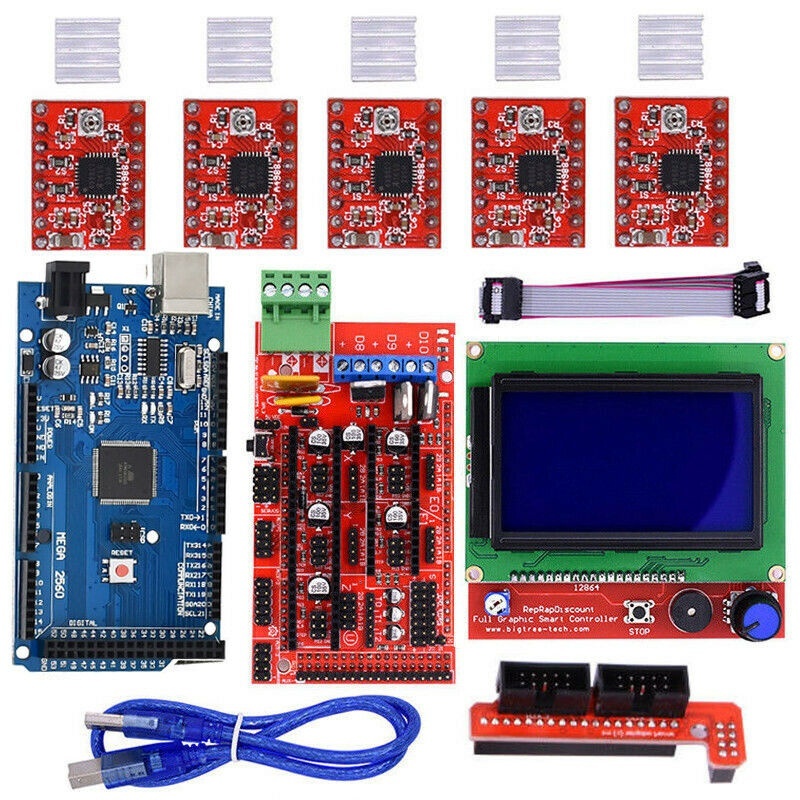 On most 3D printer controller boards, stepper drivers can’t easily be swapped out. Therefore, selecting the right kind of controller board with the right stepper driver is essential.
On most 3D printer controller boards, stepper drivers can’t easily be swapped out. Therefore, selecting the right kind of controller board with the right stepper driver is essential.
Basic stepper drivers like the A4988 are cheap, easily accessible, and provide a relatively good experience for basic 3D printers. They do drive stepper motors loud, are unreliable, and can only provide the steppers with limited current.
TMC drivers, on the other hand, are known for their silent operation and current-carrying capacities. The TMC 2xxx series are rated at 2A peak current, while the TMC 5160 typically offers 3A to 4.4A on 3D printer controller boards.
You need to consider the microstepping capabilities of the stepper motor drivers as well. Microstepping divides a full step into smaller steps. The smaller the step, the higher the resolution and the smoother the vibration. As a minimum, you want 1/16 step microstepping, but the best 3D printer controller options offer up to 1/256 step
Touch screen support
A touch screen enhances the functionality and ease of use of a 3D printer by making navigating the menu and dialing in the various features easier.
Not all controller boards have touch screen support built-in. While choosing a controller board, look at the connectivity options and the compatible touch screens. You need to make sure that the board’s firmware supports it, and there is at least a little bit of documentation on how to interface the controller with the touch screen.
FAQ
What is a 3D printer controller board?
A 3D printer controller board is a piece of hardware that controls all electronic components in a 3D printer. It is responsible for motion, temperature control, and reading all commands from GCode files.
Why upgrade your printer’s stock controller board?
As time passes, the current features in your 3D printer start to seem obsolete. A controller board upgrade will give you access to many advanced features, allow for added functionalities and enhance your overall 3D printing experience.
Is a 3D printer controller board the same as a 3D printer motherboard?
Yes, in the context of 3D printing, the terms ‘controller board’ and ‘motherboard’ are used interchangeably. They mean exactly the same thing.
They mean exactly the same thing.
Conclusion
The best 3D printer controller boards are the ones you’re able to afford and will work with your 3D printer. With so many options on the market, it can be tough to choose just one. The important thing is figuring out which one of these top-rated controllers would be right for you.
In our opinion, the Duet 2 Wi-Fi is the overall best 3D printer controller board that you can get right now. Despite its high price, the Duet 2 Wi-Fi ticks all the boxes in terms of features, connectivity, upgrades, and ports. It is designed to be a universal solution for all types of 3D printers and can serve as an effective replacement for practically any board.
Let us know what you think about it, and if you have anything else to add, feel free to comment below.
Scroll to Top
Smoothieboard - 32-bit CNC controller for 3D printers, laser cutters and milling machines This board is designed to replace RAMPS, Sanguinololu and Generation Electronics, which are used as 3D printer controllers.
 While most modern Open Source Hardware electronics use 8-bit AVR microcontrollers (including Arduino), Smoothieboard has 32-bit ARM (LPC1768 Cortex-M3), which allows it to make fast and smooth movements, gives more accurate mathematics. and deep planning. In addition, the firmware of the device is modular and easily modified. nine0003 And the price, depending on the version, varies from 100 to 185 US dollars.
While most modern Open Source Hardware electronics use 8-bit AVR microcontrollers (including Arduino), Smoothieboard has 32-bit ARM (LPC1768 Cortex-M3), which allows it to make fast and smooth movements, gives more accurate mathematics. and deep planning. In addition, the firmware of the device is modular and easily modified. nine0003 And the price, depending on the version, varies from 100 to 185 US dollars. Control
The device can be controlled via USB (console and access to files), or a web-face by connecting an Ethernet cable, or by inserting a MicroSD card with a G-code written to it.
Print settings can be changed simply by connecting via USB and editing the settings file.
Community
Since 2010, the project has acquired a good community
- IRC: (#smoothieware @ irc.freenode.net)
- Mailing list: groups.google.com/group/smoothieware-support and http://groups.
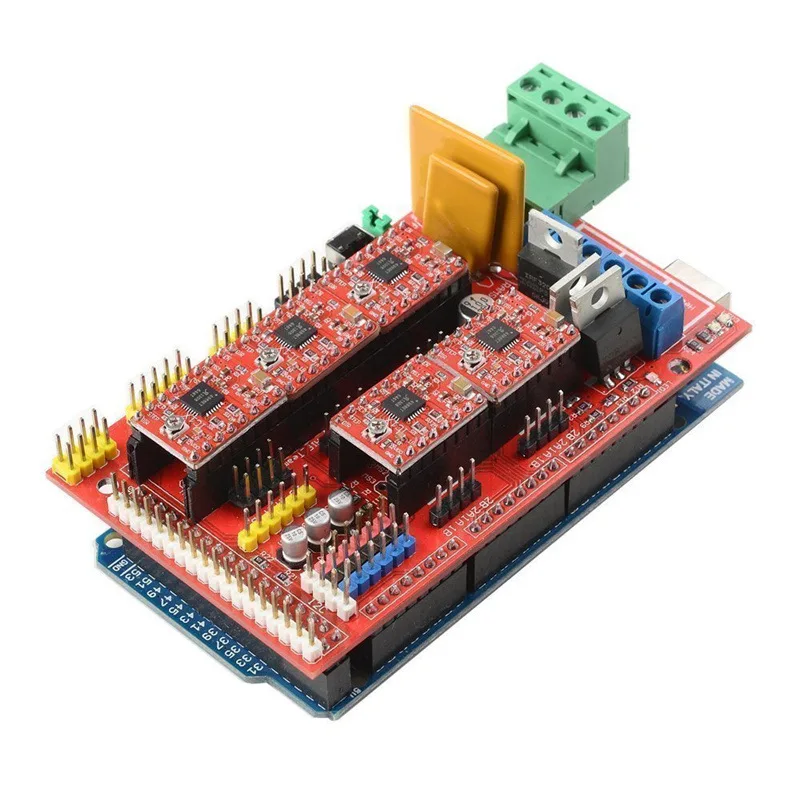 google.com/group/smoothie-dev
google.com/group/smoothie-dev
Technical version
Also:
- Stepper motor controllers are cooled by PCB with large areas of copper plating
- All main connectors and pins are located on board borders for easy connection
- Digital control of the current settings of the stepper motor, allow you to forget about measuring the current with a potentiometer, but simply write the required one in the configuration file
Modularity
As mentioned earlier, the firmware here is modular, i.e. adding new functionality, it is enough to add a new section to the configuration file.
Compatible
Smoothie is friendly. He speaks the same language as RepRap (Marlin/Sprinter) as well as the good old GRBL. Those. if you used them before, then all your software will work with this board, which is called “out of the box”.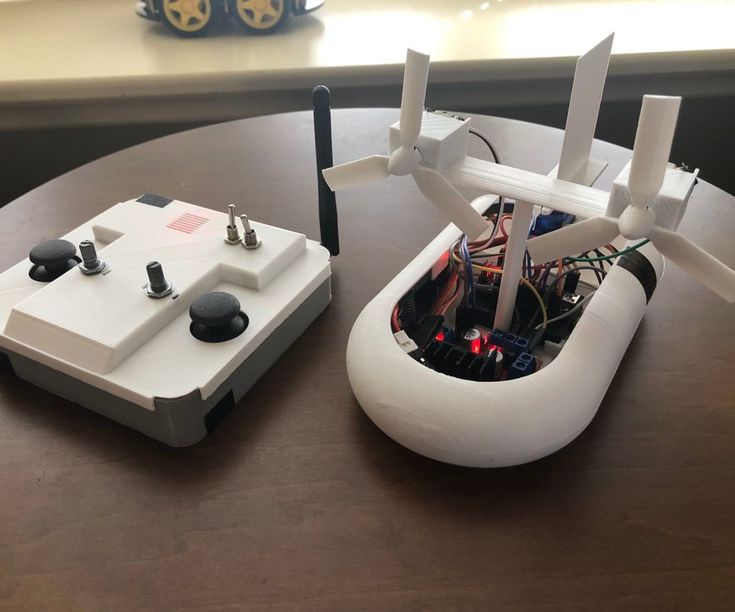 nine0004
nine0004
Documentation
Extensive documentation is available at smoothieware.org.
Data sheet
Microcontroller NXP LPC176x:
- 96MHz - 120MHz 32-bit ARM Cortex-M3 Core, 64KB RAM, 512KB Flash
Bipolar stepper motor Allegro A4982:
- up to 24V 2A microstepping 16x, digital current control
- 3 to 5 drivers depending on configuration nine0053
- 3 support up to 24V 5A and 3 more up to 24V 12A to control external devices such as hotends, fans and heated beds.
- 3X version has two small, 4X two large and one small, and 5X 3 large and 3 small MOSFETs
- Parameters are taken from the configuration file without mandatory recompilation
- Update supports binaries that also do not require recopying
- Simultaneous file and console access via USB
- 3X ($100) and 3XC ($125) are suitable for laser cutters, small milling machines such as ShapeOkos.
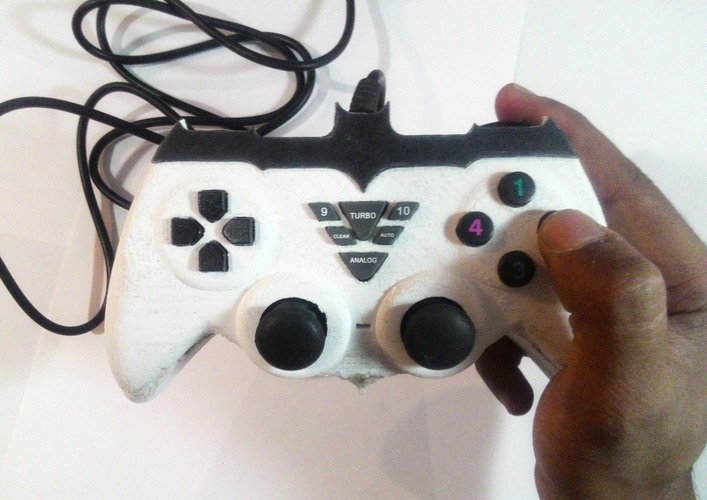 They have 3 stepper motor controllers, two small MOSFETs and no ethernet connector
They have 3 stepper motor controllers, two small MOSFETs and no ethernet connector - 4X ($130) and 4XC ($150) are suitable for single extruder 3D printers, laser cutters and CNC machines. They have 4 controllers, two large and small MOSFETs and an Ethernet port.
- 5X ($160) and 5XC ($185) are enough for dual-extruder 3D printers and complex experimental models. They have 5 controllers, an Ethernet port, and 3 large and small MOSFETs each.
- home
- Blog nine0016 Controller Project: 3D.
- Availability. Digital files can be sent anywhere in the world and printed at any available additive manufacturing center.
- Speed. Local printing is much faster than other projects. For example, an electronics project requires the customer to send their controller first.
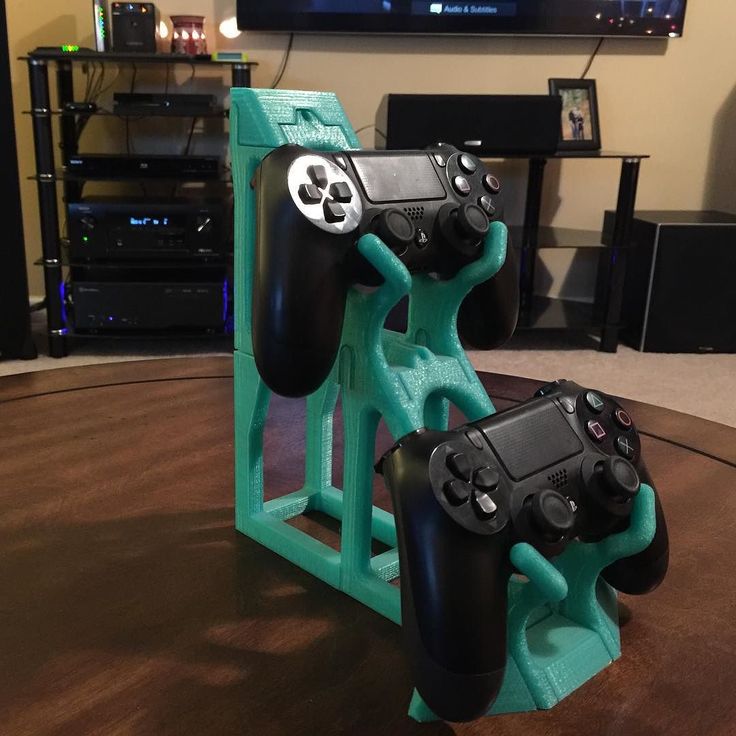
Learn more
Up to six FETs:
Lots of expansion options: 4 thermistor headers, 6 endstop ports, SPI, I2C, UART.
USB, MicroSD slot, Ethernet.
Easy setting:
Options
Board types:
The X and XC configurations differ from each other only in that in XC all connectors and connectors are already soldered to the board. nine0004
Delivery
By December 20, delivery of all copies should be completed. International shipping costs $15
UPDATE The required amount was collected within 48 hours.
3D printed controllers for gamers with disabilities
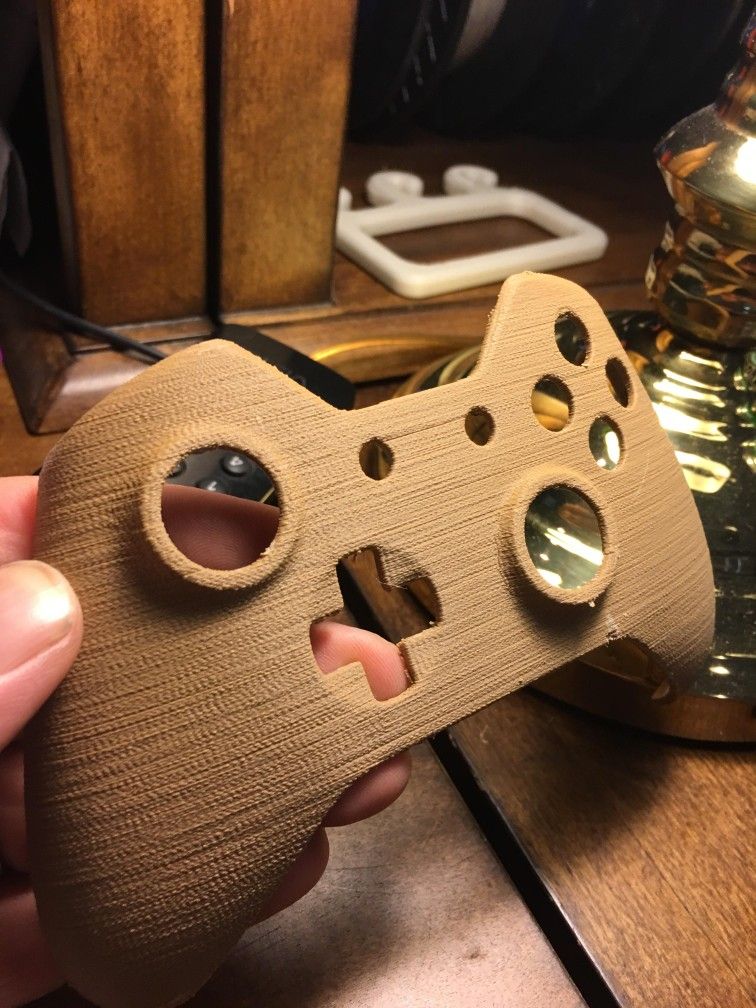 ..
..
Video games, especially console games, are designed for people who have fully functional both hands. They are not suitable for users who have problems with the mobility of the fingers or hands, as well as other physical disabilities. The situation is aggravated by modern game controllers, which involve the use of a large number of buttons in combination with analog sticks, track pads, D-pads and bumper buttons. nine0004
The Controller Project tackled this problem by launching 3D printed controller accessories to make video games accessible to all types of users.
For example, the one-handed PS4 controller from the Controller Project is designed to allow full access to all buttons with the thumb of the left hand. The company also offers controllers for regular consoles, not just the PlayStation.
Dual Shock 4 One-Hand Controller
(Image credit: The Controller Project)
Because not all people with disabilities are the same, the company welcomes requests for custom controller modifications from gamers.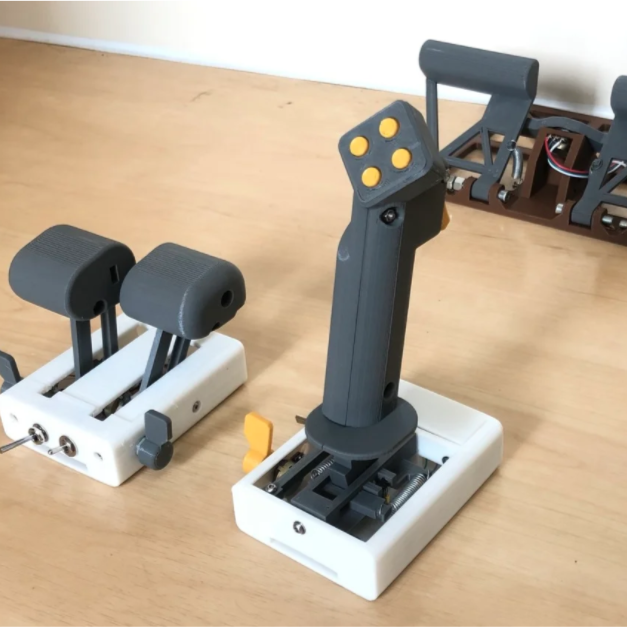
The founder of the Controller Project, Caleb Kraft, was inspired to create the project after he tried to design a controller for a muscular dystrophy gamer named Thomas. "I've been working on custom controllers a bit as a hobby," Kraft wrote on his website. According to Caleb, when he saw the opportunity to develop a controller for Thomas, he thought he could make a great video for his archive. But by working with Thomas and seeing the results of his work, Kraft gained not only insight into the daily life of a gamer with a disability, but also valuable experience. nine0004
Ultimately, Thomas' controller proved to be rather useless. According to Kraft, Thomas never used it, although they did not discuss the matter. But the time was well spent, as Caleb's experience was the start of the Controller Project. What started as a hobby has grown into a movement of sorts. Kraft has managed to gather a large group of volunteers from all over the world willing to do their part in making video games truly accessible to everyone.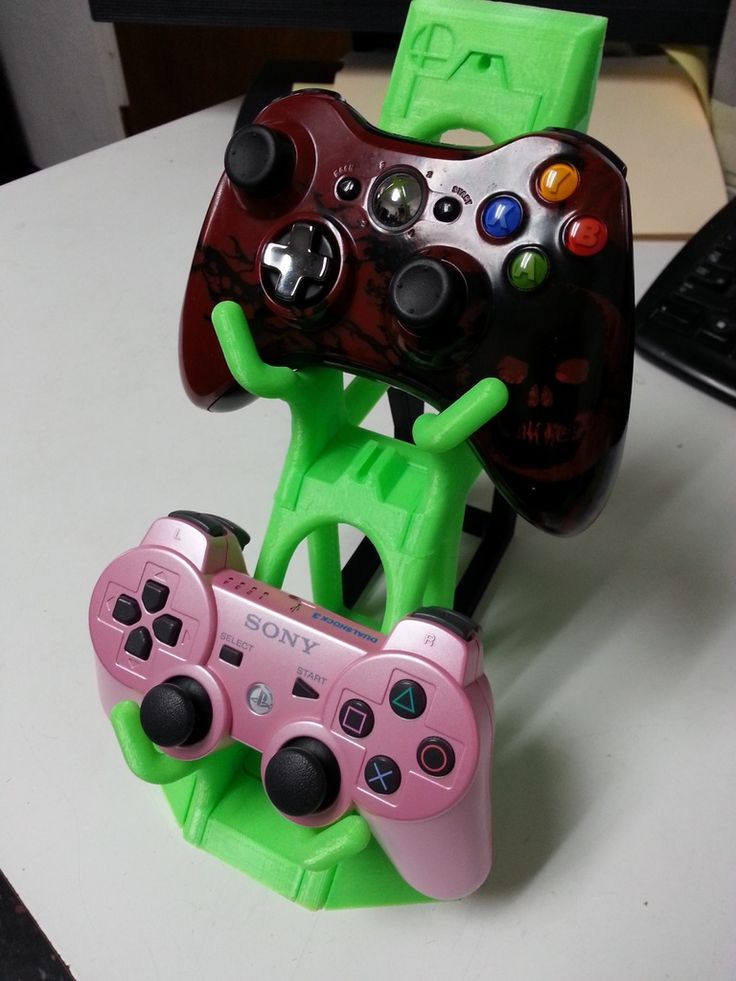
Armed with 3D printers provided by Prusa Research and electronics from Adafruit, the project is growing day by day. Caleb Kraft maintains the quality of the equipment himself and carefully controls the design of the created accessories before distributing them electronically around the world for printing in local additive manufacturing centers and 3D printing studios. Only after careful testing and testing of prototypes, gamers receive digital models of parts for their controllers and can order their production in their area. nine0004
Xbox Bumper/Fire Button Extension.
(Image credit: The Controller Project)
Why is the Controller Project choosing 3D printing? There are several reasons for this:


